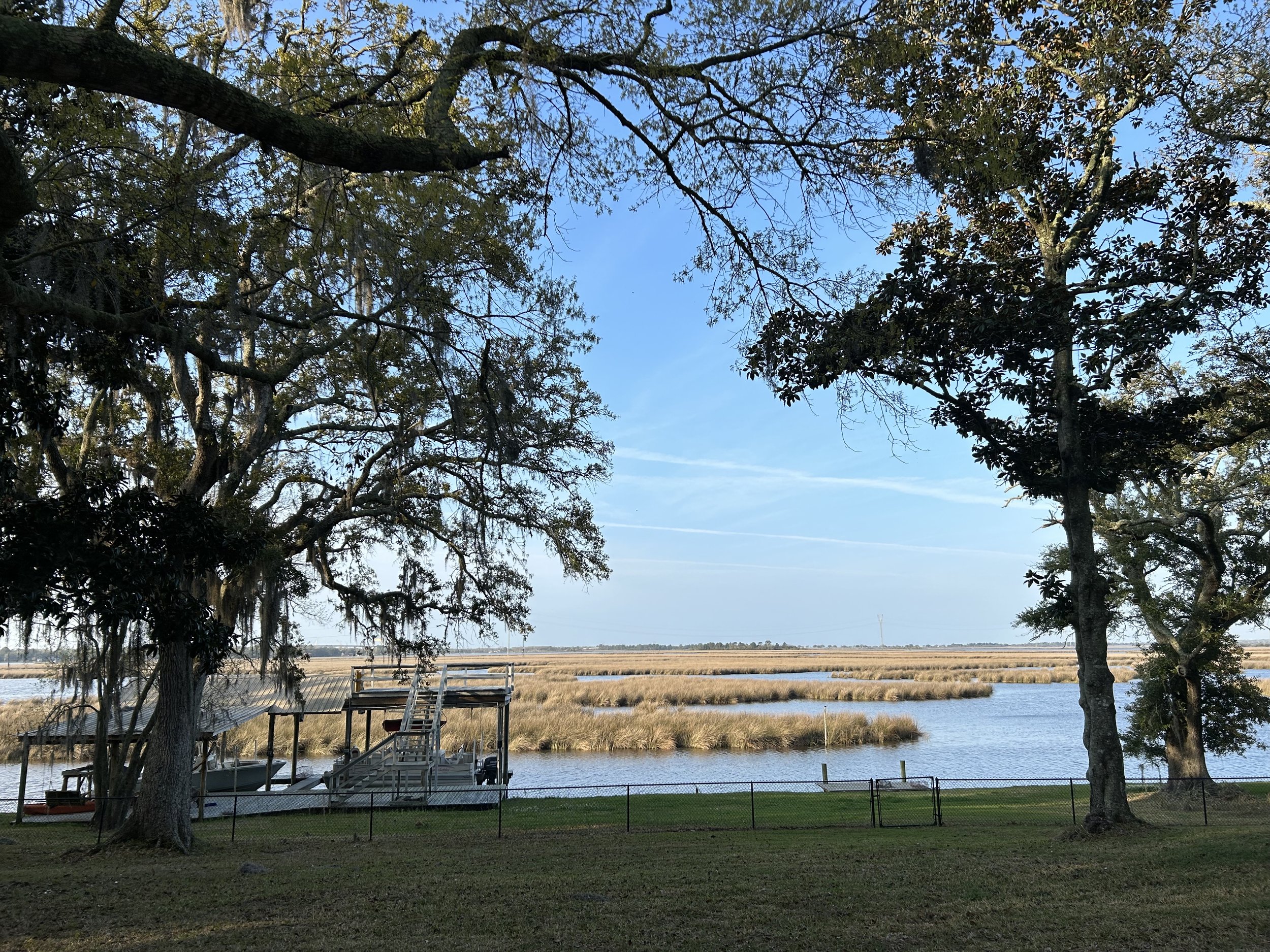This past week, we hit the road to visit friends and family in Mississippi and New Orleans.
Our first stop was a few days with two of Mart’s oldest friends and their spouses. The couple who hosted us all recently bought and helped restore and update a historic home in coastal Mississippi. I’ve written about the house before here.
It’s a gorgeous property filled with history, antiques, art, and fine details that give a historic house character. (Oh, and a chapel, too!)
Outside, the first touches of spring brought color and beauty. A trained wisteria vine dripping with purple blossoms stood at one end of the pool.
Azalea bushes offered up vivid pink petals in profusion.
Live oaks and other old trees framed views of the water with the boat just waiting to go.
Early one morning, before anyone of us had even had caffeine, we saw out the window a great horned owl swoop down to the fountain for a few sips of fresh water. He was so still that he seemed to be part of the ornament on top of the fountain.
A nearby squirrel froze in the grass and tried hard to be invisible.
Those of us inside made no sudden moves, either, because we didn’t want to startle the owl away. Our friends’ two little white bichons stared boldly out the windows, safe behind the glass.
But the owl ignored us all and took its time quenching its thirst before flying back up into a nearby live oak, hidden from sight by resurrection ferns growing along the tree limbs. And the squirrel scampered safely away.
That afternoon, three of us visited a historic site nearby, the LaPointe-Krebs House.
According to the website, “the LaPointe-Krebs House, located on the Mississippi Gulf Coast in Pascagoula, was built during the French Colonial period in 1757. It is the oldest scientifically dated building in Mississippi and is likely the oldest house between the Appalachian and Rocky Mountains. It is the only remaining example of tabby concrete construction on the entire Gulf Coast.”
What is tabby, you ask? Good question.
“The walls [of the house] were formed from a material called tabby which is concrete-like and is created by mixing together quicklime and water with sand, ash, and locally found shell (primarily oyster) as aggregate. This mixture was packed into forms and allowed to harden into the 12″ thick walls that are still standing today.”
Despite the interesting mix of materials, tabby is long-lasting. We have seen it in other historic buildings in the south, specifically in Savannah and coastal South Carolina.
The next day, after a yummy seafood lunch, we said goodbye to our friends and made our way to the next stop on our road trip.
More on that next week.
I'm honored that you've taken time out of your day to stop by my blog, Glimsen. If you like what you see, click the green button below to receive my blog posts and updates by email, and you'll receive a free gift of beauty in your inbox. I look forward to connecting with you!












